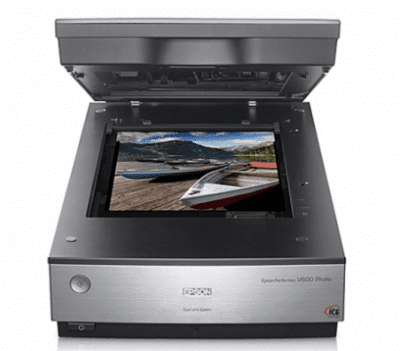

We don't use any other software to test scanners. It can also automatically calibrate the scanner using a special IT8 target barcoded by LaserSoft. The latest version creates a high density file from two samples (one exposed for the highlights and another for shadow detail) that is faster and more effective than most multi-pass approaches. Only the V750 comes with Ai, but it's worth purchasing separately. VueScan now has the added benefit of being able to save its Raw scans as Adobe DNG files.Īnother solution we've long recommended is LaserSoft's SilverFast Ai. It works with nearly every scanner ever sold and can squeeze more juice out of scan by accident than most programs can with infinite tweaking and twiddling. One solution to this is to buy and stick with Ed Hamrick's VueScan ( ). A blue light indicates the status of the transparency unit. NSTL observes from these measurements that the average maximum OD value for this scanner is greater than 4.0." Nothing there about density range. The SNR (signal to noise) values for all the scanned images for Epson Perfection V700 Photo scanner were found to be greater than one. This scanner yielded consistent OD (maximum optical density) values for each scan at both the resolutions. A report Epson sponsored by the independent testing organization NSTL noted, "Epson Perfection V700 Photo was tested at both 6400 dpi and 4800 dpi resolutions. But it's hard to find a range rating from a scanner manufacturer, even when they underwrite independent tests. Dmax numbers are often inflated by cranking up the exposure so high that highlight detail is burned out (which would be represented by a much higher than normal Dmin). The transparency unit is exposed for illumination on top.ĭensity range is calculated by subtracting the Dmin, or minimum density at which detail can be distinguished, from the Dmax. Meanwhile, let's review how this game is played and the features that matter. If you need some help to appreciate them, take a look at Kim Brady's Guide to Desktop Scanners ( ) from our Sept. VueScan also has a dust removal function, incidentally, which relies on the scanner's ability to make an infrared scan of physical defects like Digital ICE. It also includes a Dust Removal feature in addition to the Digital ICE technology (which takes a bit longer) used in SilverFast. Batch scanning of slides, negatives and medium format film using plastic carriers that slip into place on the scanning bedĮpson Scan software includes a Color Restoration function, but so does SilverFast and VueScan.


Let's take a look at what makes this Epson the state of the art. Indeed, VueScan author Ed Hamrick cites it as one of the best high-end flatbeds. With one of the highest scan resolutions available in a desktop model at 6400 dpi and a dual lens design that can digitize a slide at 2400 dpi in a minute, that's no surprise. No matter what we threw at it, it never missed a beat.

We've used the V700 for nearly all our scanning, from simple copier tasks through high resolution film scans for prepress. Both come with Epson Scan software and Adobe Photoshop Elements, but the V700 includes LaserSoft SilverFast SE6 while the V750 adds Monaco EZ Color and SilverFast Ai 6. The real difference is in the bundled software. It's the same hardware (except the V750 has an anti-reflection optical coating applied to the CCD glass and comes with a fluid mount accessory). Its distinctive dark gray and silver squared-off design takes up a corner of our large equipment table, connected to our main systems via a USB 2.0 port, the recommended configuration.Įpson sells this scanner in two versions: the $549.99 V700 Photo and the $799.99 V750-M Pro. We've been working with an Epson V700 in the bunker since July of last year, thanks to a quite generous loan from the company. The Imaging Resource Digital Photography Newsletter FROM 35MM TO PREPRESS Epson V700 Scanner - Top of the Line By MIKE PASINI


 0 kommentar(er)
0 kommentar(er)
